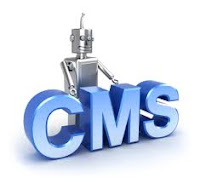
When a SharePoint list or library has a large number of items, you must carefully plan its organization, taking into account how users need to access documents or data. By planning and using a few key list and library features, you can ensure that users can find information without adversely affecting the performance of the rest of your site.
SharePoint contains a Document Center site template that you can use when you want to create a site that is optimized for creating, managing, and storing large numbers of documents.
Manage large numbers of documents using Document Center site
A Document Center is a specialized site designed to serve as a centralized repository for managing documents. You can use a Document Center site as an authoring environment or a content archive.
In an authoring environment, users actively check files in and out and create folder structures for those files. Versioning is enabled, and 10 or more earlier versions of each document can exist. Users check documents in and out frequently, and workflows can help automate actions on the documents.
In contrast, very little authoring occurs in a content archive. Users only view or upload documents. The Document Center site template supports creating knowledge base archives.
You can also create another type of large-scale archive by using the Records Center site template. The Records Center site template contains features for managing the retention and disposition of records.
Document Center Features
Tree View Navigation

The tree view should be a familiar navigation element for most Microsoft Windows users. A documents library can have folders so you can use the tree view to quickly browse to the document that you want. Be careful when you create folders. It is not advisable to create sub-folders, i.e. folders inside folders because users have to click many times to get to documents. If you need to separate documents inside the folder, perhaps it is the time to create a new library to create more space.
Major and Minor Document Versioning
You can turn on versioning for any document library. Versioning lets you track changes to documents, and it helps you manage content as you revise it. Versioning is especially helpful when several people work together on projects, or when information goes through several stages of development and review.

With versioning turned on, you can restore an earlier version as your current document, or view an earlier version without overwriting the current document.
Check-in and Check-out
The default settings in the Document Center require users to check out and check in files. Requiring check-out helps prevent conflicts and confusion over changes, because only one user can change a file at a time. When you require check-out, a file is checked out automatically when someone opens it for editing, unless another user already has it checked out.
While you have a file checked out, your changes are not visible to others until you check the file back in. This is true whether you are working on your hard disk or on the server. When you check in a file, you are prompted to enter comments about your changes, and the comments become part of the version history. And because the Documents library tracks major and minor versions of a file, you are prompted to choose which type of version you are checking in. Minor version is usually still a draft document, and a major version is a completed version of this document.
Content Types
A content type is a reusable group of settings for a category of content. You can use content types to manage the metadata, templates, and behaviors of items and documents consistently. See my post on SharePoint content types for more details on how to work with content types in SharePoint.
Create Specialized Views
You can create specialized views in libraries which will allow users to see only one set of items at a time. Views are based on metadata fields assigned to documents or data. When you create these views, choose only those metadata fields that you want to see in these views. You can also specify the order in which metadata will appear. You also will be able to filter these views to see only specific items.
Workflows
You can create workflows to automate movement of documents. SharePoint has the following workflows: approval, review, collect signature. You can also set up a workflow to flag obsolete documents - it is called three-state workflow. You can create specialized workflows using SharePoint Designer. See my post on SharePoint workflows for more details on how to set up and manage workflows.
Content Approval
If you set up content approval, you can control the publication of new content. This will help to ensure that only completed documents are uploaded, that documents are uploaded into correct locations, and metadata is populated correctly.








